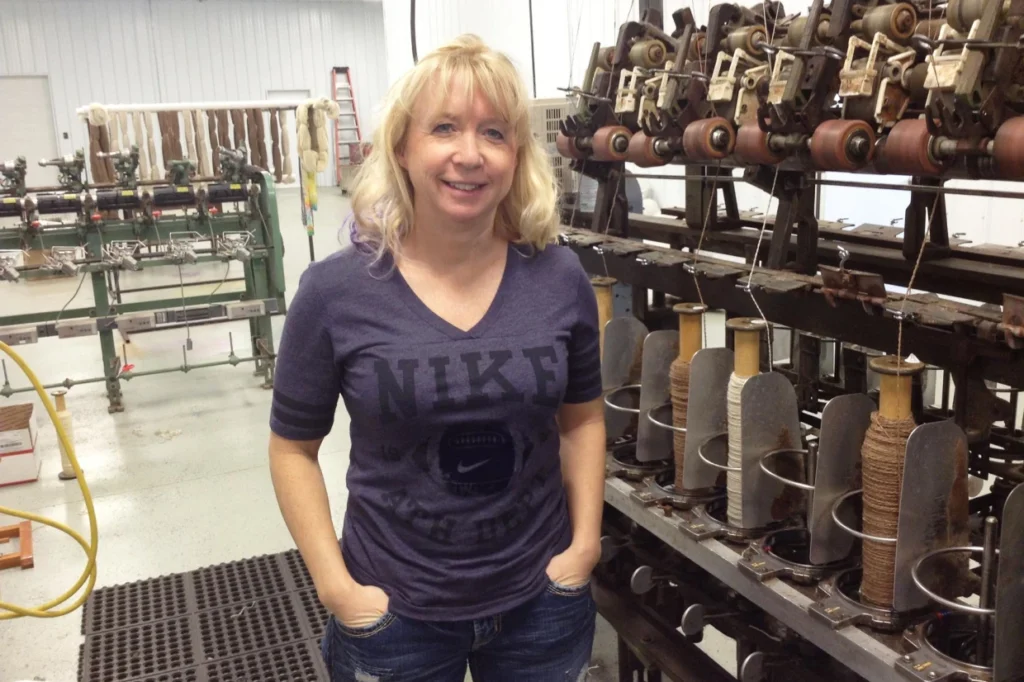Quick question about that sweater or blanket you’re clinging to this long winter. Was it “Made in the USA?” And if it’s wool, any idea where the yarn came from?
Most wool apparel is manufactured with fine merino wool, which comes from Australian sheep. And global wool production is dominated by that country, as well as New Zealand and China. America ranks 11th in the manufacturing of wool, according to industry data.
It’s amid this backdrop that the work of Minnesota entrepreneur Stephenie Anderson stands out.
In the dead of winter in December, Anderson and her eight-employee business flipped the switch on a brand new wool mill that produces bundles of finished wool yarn—something the region hasn’t seen in some 50 years. Her business customers, stretching to the East Coast, turn her yarn into blankets, garments and upholstery—all “Made in the USA.”
Clearly the American wool supply chain—from sheep to yarn to final product—is leaner than decades past. Most wool from American sheep can be scratchy, not the soft stuff from Australian animals. That difference is because U.S. sheep are raised primarily for food, not their wool. The domestic wool industry is shifting, if ever so slightly on a small scale.
Domestic textile innovations allow for the creation of softer fibers made with tougher yarn. More small- to mid-sized businesses are realizing it’s no longer cost effective to outsource materials and business to other countries, including China. So through a word-of-mouth network of yarn producers, spinners and dyers, scrappy entrepreneurs are keeping the “Made in USA” wool tradition alive—and in some cases sparking growth.
‘Crazy’ innovative
Anderson’s Northern Woolen Mills is located in a remote Minnesota town of about 1,500, which makes the new mill even more remarkable. Fosston is far from Chicago and other manufacturing hubs President Barack Obama has been showcasing.
Anderson, a life-long knitter, realized the region including local sheep farmers needed a mill. She sold one of her homes, and scraped together roughly $755,000 to cover the mill’s cost. Mill blueprint in hand, her small team bought equipment, some weighing three tons—operating instructions not included.
The new mill team had to rely on retired mill machinery mechanics and YouTube videos—in Spanish—to learn how to operate some of the machinery. “We don’t speak Spanish here. We just watched it until we figured it out,” Anderson recalled.
“I think I might have been crazy,” Anderson said.
Her mill produces 100 pounds of finished yarn a day and fills a processing need by regional sheep ranchers. The last time Fosston had a running mill was during the 1920s. Another mill in Bemidji, about 45 miles away, stopped making yarn in the ’60s, though they’re still in business.
So without Anderson’s mill, sheep ranchers previously had to find space on a semi load of raw wool traveling to, say, North Carolina. Sometimes the only option was to ship wool to Canada. But crossing borders means getting slapped with tariffs.
Eliminating long-distance shipping saves time, money and reduces the carbon footprint. “Local sheep shearers are coming out of the woodwork,” Anderson said.


